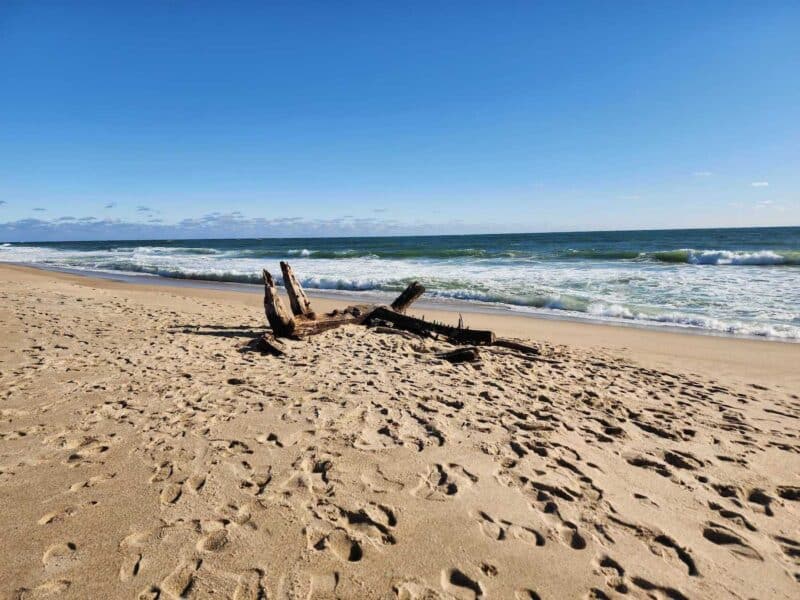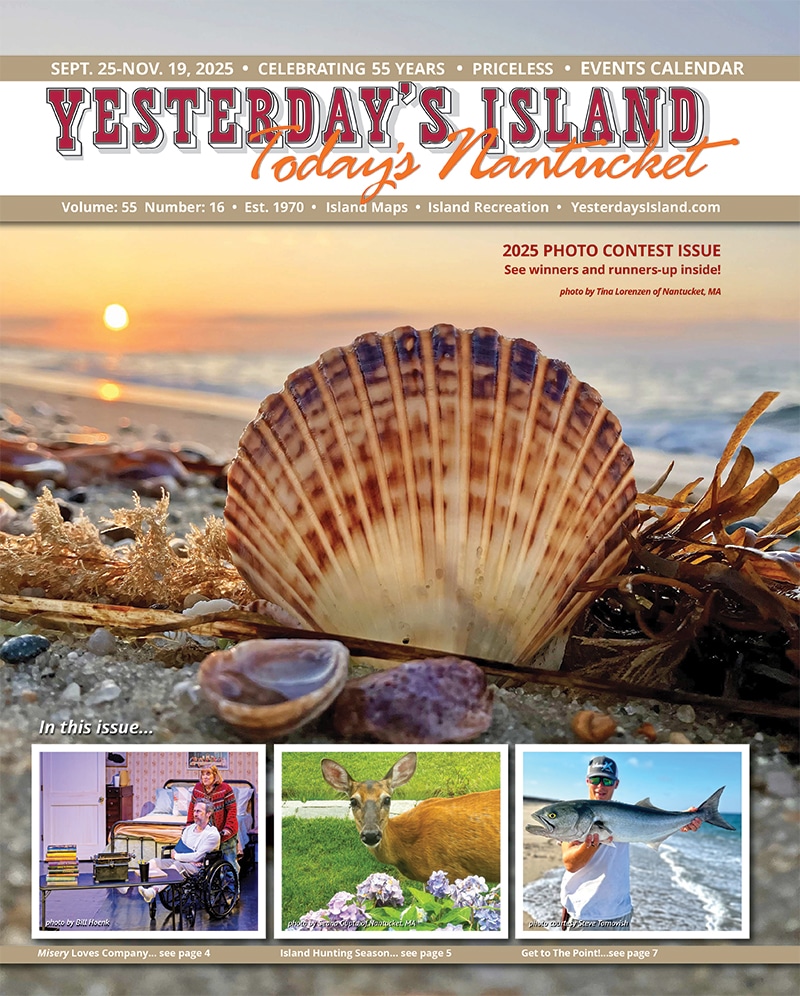by Robert P. Barsanti
On Nantucket time becomes jumbled. The years double over each other and the months get confused. Juneuary brings cold weather just as schools end. In October the beaches remain available, along with sweat marks and shorts, while the mainland admires the foliage. This year February has become April. Snow blows across the island and then sinks in the sea, while the air warms up into the sixties. In the cold, you are allowed to stay inside and watch the pucks fly, but in the warmth, nature calls with a windy whistle.
During the leafy months, old things have blown into the hedges, bushes, and weeds around the house. Like rabbits, they rolled, hopped and hid amid the green and blooming. Now that the camouflage has gone, the missing return. Deep in the weeds, soccer balls hide from the inept. Beer cans, with pull tabs, rise like elderly golfers in the rough. Frisbees, trucks, and the odd rattle or bouncy ball comes back into view. This year, on my patrol through the lost past, I found a boogie board tucked into the center of a hydrangea bush.
Now, in my defense, the hydrangea bush was where no hydrangea bush should be. A swamp (“wetlands”) has been behind my house since before it was a house. In the midst of the wetness (and the odd row of water) is an old stone and cement foundation. In the spring daffodils move in; some time in July the hydrangea sets up shop; and then, as the deer leap back and forth and the flowers flutter away, it becomes the rest home for Christmas trees. Throughout the rest of winter, until the winds whip them away, the Blue Spruce wink at us with an odd twinkle of tinsel.
The boogie board itself went back several Augusts, before real surfboards, summer work, and internships appeared. It had a brief supporting role in a series of beach movies, where it got dragged out into the Cisco and Miacomet waters, then it disappeared into the storage shed and remained there, off and on, until I discovered it mid-hydrangea.
Don’t mistake the boogie board for some lost tin soldier freed from a paper boat or some velveteen rabbit hopping to life in a swell of childhood music. Far better and more dramatic items call back the boys’ childhoods and evoke their parent’s tears. This is just a thing. Nonetheless, it is ours and it was wrecked in a bush; at the very least we should retrieve it for the theoretical grandchildren or the not-so-theoretical “Take it or Leave It.”
The sudden rush of warm weather and bright sun also illuminated the spiders. The animals hang, spin, and drift in the darkened corners of a dark house. They hide behind the hockey players, inside the book shelves, and under the chairs. At the edge of my vision, even right now, an angelic arachnid rises on an ashen line.
So I vacuumed them. In this crisp Canadian light, I snapped up every swooping shadow on the wall, under the mirrors and over the lamps. I doubt I sucked up half of them, although when I was done, the room returned to a clear focus, with clear edges and vibrant contrast. Life can continue, crisply and brilliantly, while the webs and their spinners are spun like sand in the vacuum cleaner, and then dumped into the high grass.
Of course, time and chaos make a mockery of our lives. The spiders, in their flickering spark will outlast my flame. Long after the leftovers from my funeral feast are packed into ziplock bags and the photos returned to their albums, the spiders will cluster in the corners and in the book shelves. The wind, similarly, will toss the boogie boards, cutting boards, and bulletin boards out into the weather until they all find themselves at the curling end of every windy gust. My job in living is to keep the spiders at bay for a few years and corral my boogie boards so that they don’t annoy the neighbors and rest under one roof.
My Boon Companion and I walk the beaches in the winter. While he can walk, run, roll, and skid along the sand in any season, I prefer the winter because the footing is more solid. As I have become more of a man, I prefer to walk where my feet don’t sink two or three inches into the sand with each step. The sand will bury me soon enough, it can wait a while to start its work. My Boon Companion will chase into the water, he will bark at a swimming seal, and he will faithfully and lovingly retrieve a dead and rotting seagull. But he loves water bottles and trash that blow just before him on the curling end of a windy gust. When I heard about the jawbone discovered on the eastern shore, I was glad not to win that lottery. In hope and optimism, the Boon Companion would trot back, head high, with a jawbone in his teeth. “Where” he would beg, “can we put this?”
The waves measure out the epochs. The sand, which we would like to see as a vast empty canvas waiting for the artist’s feet, buries the centuries. As time wears away at its surface, what trash will rise and become treasure: what treasures will sink and become trash? The Warren Sawyer has risen several times out of the sand to taunt our modern arrogance. It poses in paintings, photographs, and book covers. Then it sinks back into the cobwebs of centuries.
Better to be a dog, dancing on the surface, chasing water bottles and boogying on the surf. Leave the spiders to the shadows.



